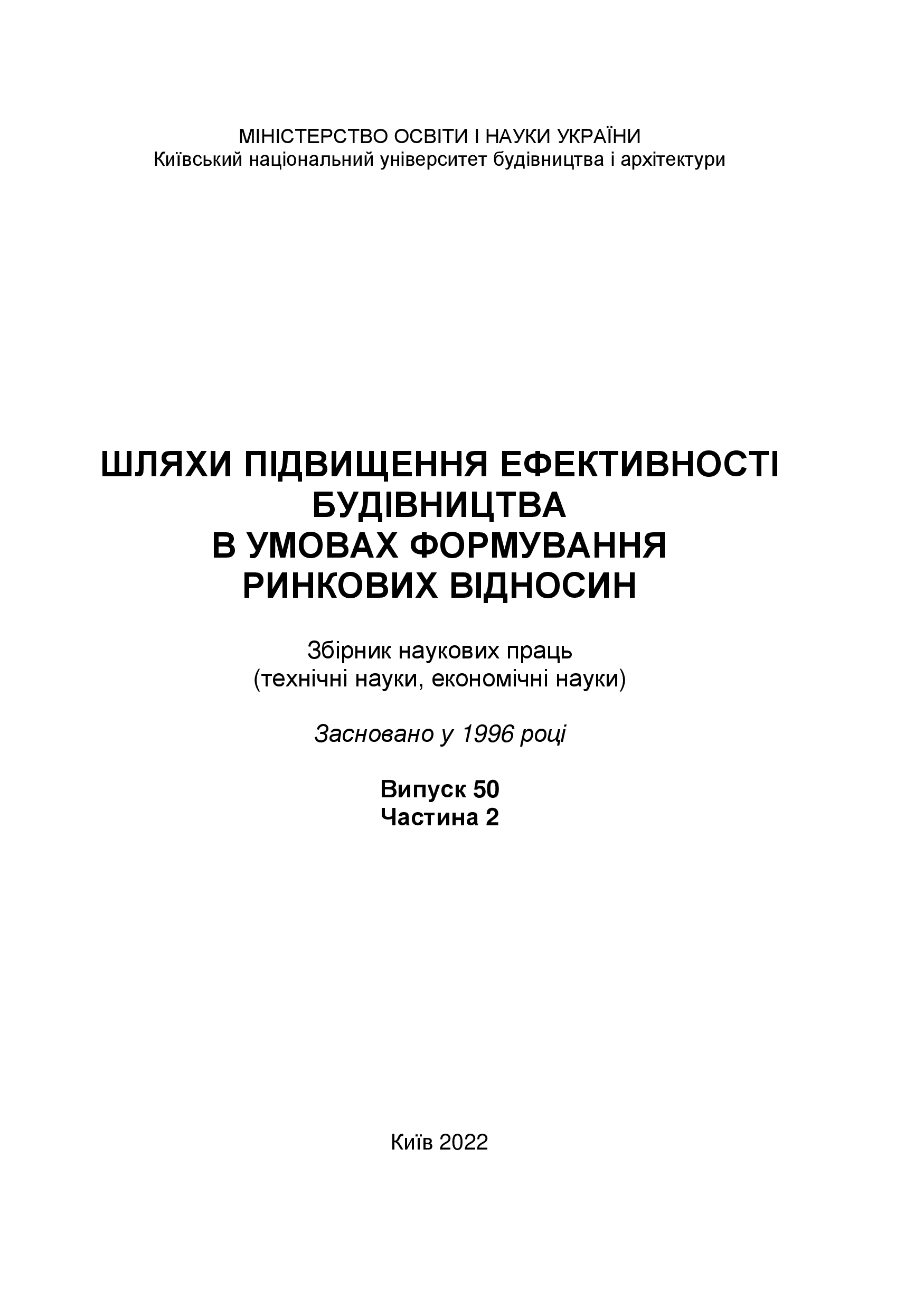Determining the estimated cost of project works using aggregated indicators of labor intensity.
DOI:
https://doi.org/10.32347/2707-501x.2022.50(2).123-129Keywords:
project works, consolidated indicators, estimated cost, labor intensity, housing reconstructionAbstract
The article is devoted to the determination of the estimated cost of project works using aggregated indicators of labor intensity. The instruction on determining the estimated cost of design works of construction objects provides for the application of percentage indicators of the cost of design works to the calculation base. The cost of the calculation base is determined with the help of similar objects, or by aggregated indicators of the cost of construction per unit of measurement. The use of analog objects has a number of disadvantages, namely: limited experience and qualifications of designers, an indefinite number of comparative objects that are available in the archive of the project enterprise, the total cost of the analog object includes the cost of material resources that affect on the estimated cost of the analogue object, and accordingly on the cost of the estimated project documentation.
To get rid of the presence of the specified shortcomings, it is necessary to change the basis of justification for determining the cost of project works. It was found that the basis can only be regulatory labor intensity, as it is stable and uniform for all regions of Ukraine.
The authors propose to change the basis of the justification for determining the cost by arriving at the determination of the labor intensity of the analogue object using the following methodology. The methodology shows the extent to which specific values of technical and economic indicators change for homogeneous groups of housing reconstruction objects and regression equations of specific values of labor intensity for certain types of works of a similar object.
The methodology was developed on the basis of normative labor intensity values of more than 30 objects of housing reconstruction. It was determined that the normative labor intensity depends on the technical and economic indicators of the objects under investigation, namely: perimeter, height, superstructure volume and base area. As a result of the study, the limits of technical and economic indicators corresponding to 3 regression models of specific values of normative labor intensity were obtained.
To verify the specified methodology, an example of determining the specific labor costs of a similar object depending on the specific values of the technical and economic indicators of the new object based on the regression equations of homogeneous groups is given. According to the equations of homogeneous groups and the corresponding technical and economic indicators, a search is made for the correspondence of the technical and economic indicators of the object under study.
The specified method allows you to find a quantitative estimate of the cost of project works by individual types.
References
Кошторисні норми України. Настанова з визначення вартості проектних науково-проектних вишукувальних робіт та експертизи проектної документації на будівництво. К.: Міністерство громад та території України, 2021р. Діючи з 8.11.2021р. 60 с.
Гриценко Ю.О. Система нормування укрупнених показників кошторисної вартості об’єктів реконструкції житла. Автореф. дис. на здобуття наукового ступеня кандидата економічних наук. КНУБА, К., 2007. 18с.
Гриценко О.С., Ковальова Л.О., Запєчна Ю.О. Визначення вартості проектних робіт за допомогою укрупнених показників кошторисної вартості об’єктів реконструкції житла. Шляхи підвищення ефективності будівництва в умовах формування ринкових відносин. 2022. No49(1). С. 185-191.
Ізмайлова К. В., Бєлєнкова О.Ю. Економіка будівництва: метод. вказів. до викон. контр. роботи "Складання інвесторської кошторис. документації": для студ. спец. 192 "Буд-во та цив. інженерія"/К.В. Ізмайлова; Київ:КНУБА,2020 .
Гойко А.Ф. Економіка проектування у будівництві: навч. посібник для студ. вищ. навч. закл./Київ. нац. ун-т буд-ва і архіт.-Київ:КНУБА,2015 . 236 с.
Гриценко Ю.О., Гриценко О.С., Горбунова Н.С., Вахович І.В. Економіко-математичні моделі визначення кошторисної заробітної плати при реконструкції житла та адміністративних будівель. Будівельне виробництво. 2009. № 50. С.115-121
Гойко А.Ф. Щодо вдосконалення методів оцінки ефективності інвестиційної діяльності підприємства. Тези доповідей міжнародної науково-практичної конференції “Економіко-управлінські та інформаційно-аналітичні новації в будівництві”.с.27-28.-Київ – 27 березня 2020.
Гойко А.Ф., Ізмайлова К.В., Куліков П.M. Економіка будівництва. Навчальний посібник. К.: КНУБА. 2013. 139 с.
Економіка будівництва: навч. посіб. / Лівінський, О. М.; Єсипенко, А. Д.; Зельцер, Є. Р.; Бєлєнкова, О. Ю.; за ред. акад. Укр. акад. наук, д-ра техн. наук, проф. Лівінського О. М. ; Укр. акад. наук. Київ : Людмила, 2019. 219 с.
www.ukrstat.gov.ua офіційний сайт «Державна служба статистики України».
Гойко А.Ф. Складання кошторисної документації за допомогою укрупнених показників: Навч. Посібник.К.: КНУБА, 2010. 144с.
Шумак Л.В. Особливості функціонування українського ринку проектних робіт та розвиток проектування в умовах пандемії. Шляхи підвищення ефективності будівництва в умовах формування ринкових відносин. 2021. № 47 (2). С. 11-24.
Ізмайлова К.В. Регресивна модель впливу проектних рішень на енергоефективність будівлі. Шляхи підвищення ефективності будівництва в умовах формування ринкових відносин. 2020. № 44. С.108-115
Шумак Л.В. Визначення кошторисної вартості на проектні роботи за кордоном. Програма та тези доповідей Міжнародної науково-практичної конференції «Економіко-управлінські та інформаційно-аналітичні новації в будівництві». Київ: КНУБА, 2019. С. 74 – 75.
Downloads
Published
How to Cite
Issue
Section
License

This work is licensed under a Creative Commons Attribution 4.0 International License.
Authors who publish with this journal agree to the following terms:
- Authors retain copyright and grant the journal right of first publication with the work simultaneously licensed under a Creative Commons Attribution License that allows others to share the work with an acknowledgement of the work's authorship and initial publication in this journal.
- Authors are able to enter into separate, additional contractual arrangements for the non-exclusive distribution of the journal's published version of the work (e.g., post it to an institutional repository or publish it in a book), with an acknowledgement of its initial publication in this journal.
- Authors are permitted and encouraged to post their work online (e.g., in institutional repositories or on their website) prior to and during the submission process, as it can lead to productive exchanges, as well as earlier and greater citation of published work (See The Effect of Open Access).

